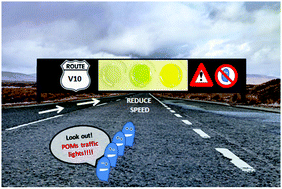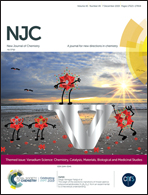Polyoxovanadate inhibition of Escherichia coli growth shows a reverse correlation with Ca2+-ATPase inhibition†
Abstract
Recently, a global analysis of the structure–activity-relationship of a series of polyoxometalates (POMs) revealed that the most active POMs were ascribed to be polyoxovanadates (POVs), especially decavanadate (V10), which was very active against certain bacteria (Bijelic et al., Chem. Commun., 2018). The present study explores this observation and compares the effects of three POVs namely MnV11, MnV13 and V10 against Escherichia coli growth. It was observed that MnV11 presents the lowest growth inhibition (GI50) value for Escherichia coli followed by the MnV13 compound, being about 2 times lower than that of V10; respectively, the values obtained were 0.21, 0.27 and 0.58 mM. All three compounds were more effective than vanadate alone (GI50 = 1.1 mM) and also than decaniobate, Nb10 (GI50 > 10 mM), an isostructural POM of V10. However, the POVs exhibiting the highest antibacterial activity (MnV11) were shown to have the lowest Ca2+-ATPase inhibitor capacity (IC50 = 58 μM) whereas decavanadate, which was also very active against this membranar ATPase (IC50 = 15 μM), was less active against bacterial growth, suggesting that POV inhibition of ion pumps might not be associated with the inhibition of Escherichia coli growth.

- This article is part of the themed collection: Vanadium Science: Chemistry, Catalysis, Materials, Biological and Medicinal Studies


 Please wait while we load your content...
Please wait while we load your content...